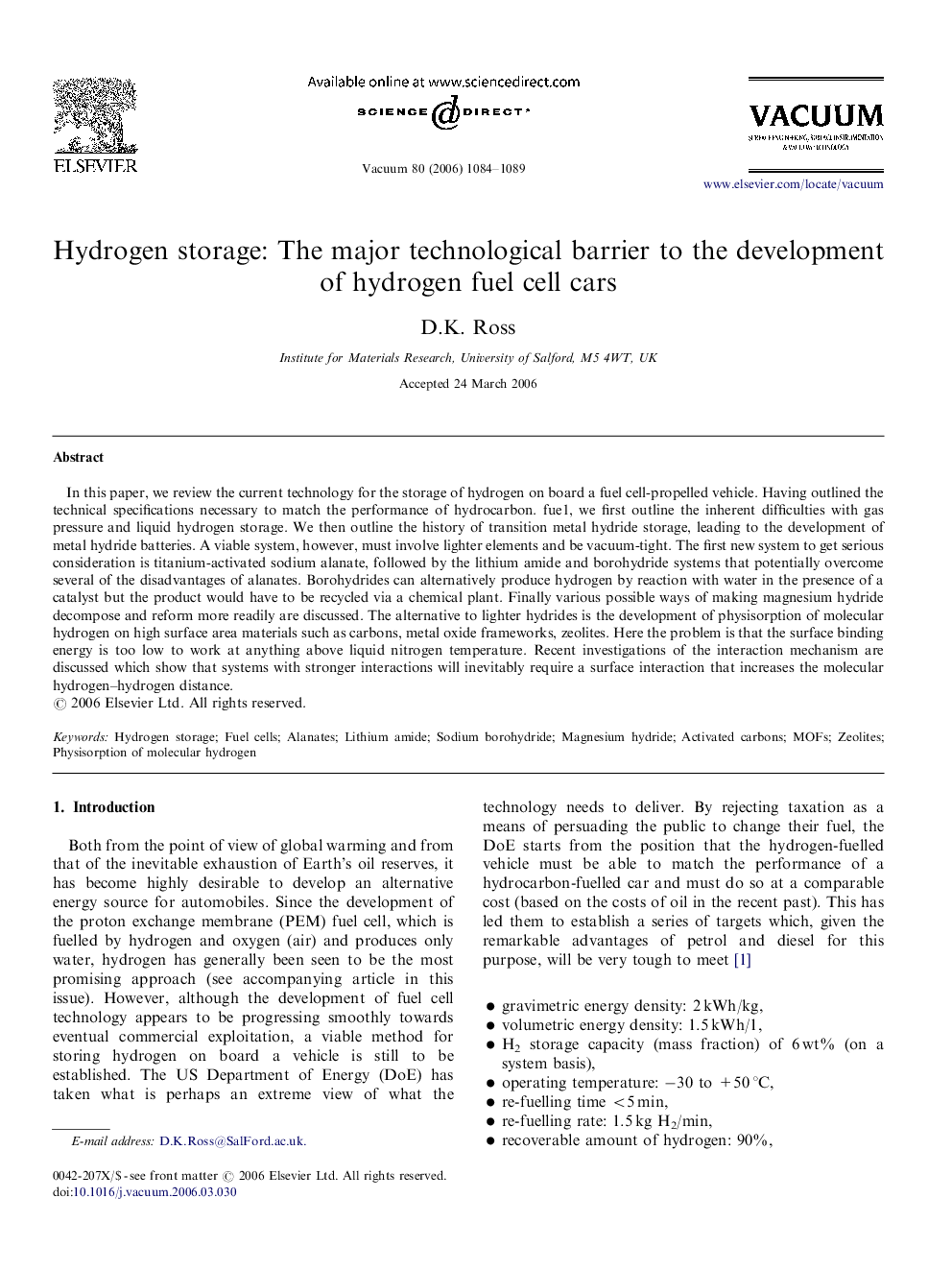| Article ID | Journal | Published Year | Pages | File Type |
|---|---|---|---|---|
| 1691678 | Vacuum | 2006 | 6 Pages |
In this paper, we review the current technology for the storage of hydrogen on board a fuel cell-propelled vehicle. Having outlined the technical specifications necessary to match the performance of hydrocarbon. fue1, we first outline the inherent difficulties with gas pressure and liquid hydrogen storage. We then outline the history of transition metal hydride storage, leading to the development of metal hydride batteries. A viable system, however, must involve lighter elements and be vacuum-tight. The first new system to get serious consideration is titanium-activated sodium alanate, followed by the lithium amide and borohydride systems that potentially overcome several of the disadvantages of alanates. Borohydrides can alternatively produce hydrogen by reaction with water in the presence of a catalyst but the product would have to be recycled via a chemical plant. Finally various possible ways of making magnesium hydride decompose and reform more readily are discussed. The alternative to lighter hydrides is the development of physisorption of molecular hydrogen on high surface area materials such as carbons, metal oxide frameworks, zeolites. Here the problem is that the surface binding energy is too low to work at anything above liquid nitrogen temperature. Recent investigations of the interaction mechanism are discussed which show that systems with stronger interactions will inevitably require a surface interaction that increases the molecular hydrogen–hydrogen distance.
